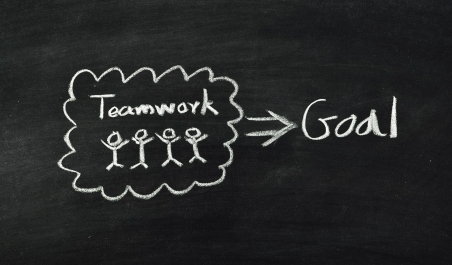The Secret to Successful Recruiting
Recruitment has always been a tricky business. So many times a candidate can sound like the perfect match on paper, only to prove a disappointment at interview. Then there are the even worse scenarios, where a candidate comes across both in real life and on paper as perfect, only to then not meet the criteria when actually in the job. There must be a way for recruiters to ensure that they hire only the best and most promising candidates, those who are almost guaranteed to perform and stay in a role for the long term.
While workplaces are swiftly becoming more and more advanced in cloud computing, using social media for marketing purposes, and generally becoming au fait with modern technology, there is one area which is sadly lacking when it comes to technological advancement. Despite the realization that computer software greatly enhances the efficiency with which businesses operates, the use of recruitment software is not widespread. The simple fact is that not many business leaders are aware that recruitment software can transform your HR practices for the better and make hiring a simpler process.
Why should you invest in software for your HR department? There are several reasons for doing so, each of which is detailed below.
Hi there! This article is available for free. Login or register as a StrategyDriven Personal Business Advisor Self-Guided Client by:
Subscribing to the Self Guided Program - It's Free!
About the Author
From her 25 years in business, Elizabeth Hill aims to pass on knowledge and skills gained in that time through her writing. She loves walks in the countryside, spending time with family and friends, and is ever so ‘slightly’ addicted to coffee.

 Utilizing more than a decade of human capital management, sales and leadership experience, Greg Moran is Founder and CEO of Chequed.com. Chequed.com is redefining the way companies hire with a singular goal… No Bad Hires. Ever. Their Predictive Talent Selection™ platform helps leading brands worldwide make hiring more efficient and data driven through cloud-based, automated, predictive reference checking. In partnership with the University at Albany, Chequed.com works with organizations to implement best practices in talent selection, which are scientifically proven to reduce cost per hire, increase quality of hire and improve organizational productivity. For more information, visit
Utilizing more than a decade of human capital management, sales and leadership experience, Greg Moran is Founder and CEO of Chequed.com. Chequed.com is redefining the way companies hire with a singular goal… No Bad Hires. Ever. Their Predictive Talent Selection™ platform helps leading brands worldwide make hiring more efficient and data driven through cloud-based, automated, predictive reference checking. In partnership with the University at Albany, Chequed.com works with organizations to implement best practices in talent selection, which are scientifically proven to reduce cost per hire, increase quality of hire and improve organizational productivity. For more information, visit  Most leaders monitor the performance of their various divisions, departments, and work groups using a system of organizational performance measures. These measures monitor the efficiency and effectiveness of that organization’s functions – a reflection of the responsible manager’s performance.
Most leaders monitor the performance of their various divisions, departments, and work groups using a system of organizational performance measures. These measures monitor the efficiency and effectiveness of that organization’s functions – a reflection of the responsible manager’s performance.
 Rapidly changing market conditions drive businesses leaders to continually reinvent how their organizations do business, their products and their services. Regardless of the changes made, differences between the business of today and the business of tomorrow commonly necessitate a change in personnel knowledge, skills, and experiences. While acquiring some of this background can be accomplished through an initiatives’ change management program, strategic talent needs often require new foundational knowledge, skills, and experiences be added to the organization. Such additions can be costly and time consuming and, therefore, should be planned for within the organization’s long-term and annual business plans.
Rapidly changing market conditions drive businesses leaders to continually reinvent how their organizations do business, their products and their services. Regardless of the changes made, differences between the business of today and the business of tomorrow commonly necessitate a change in personnel knowledge, skills, and experiences. While acquiring some of this background can be accomplished through an initiatives’ change management program, strategic talent needs often require new foundational knowledge, skills, and experiences be added to the organization. Such additions can be costly and time consuming and, therefore, should be planned for within the organization’s long-term and annual business plans. Every manager should seek to know the stay/leave propensity of his or her subordinates and certainly that of top performers. While true knowledge of others’ intentions is unknowable and unpredictable opportunities arise, there are artificial retention mechanisms and observable signs that together suggest an individual’s inclination. Recognizing these signs and factoring them into an assessment of employee loss risk is important to a manager’s ability to retain top talent.
Every manager should seek to know the stay/leave propensity of his or her subordinates and certainly that of top performers. While true knowledge of others’ intentions is unknowable and unpredictable opportunities arise, there are artificial retention mechanisms and observable signs that together suggest an individual’s inclination. Recognizing these signs and factoring them into an assessment of employee loss risk is important to a manager’s ability to retain top talent.